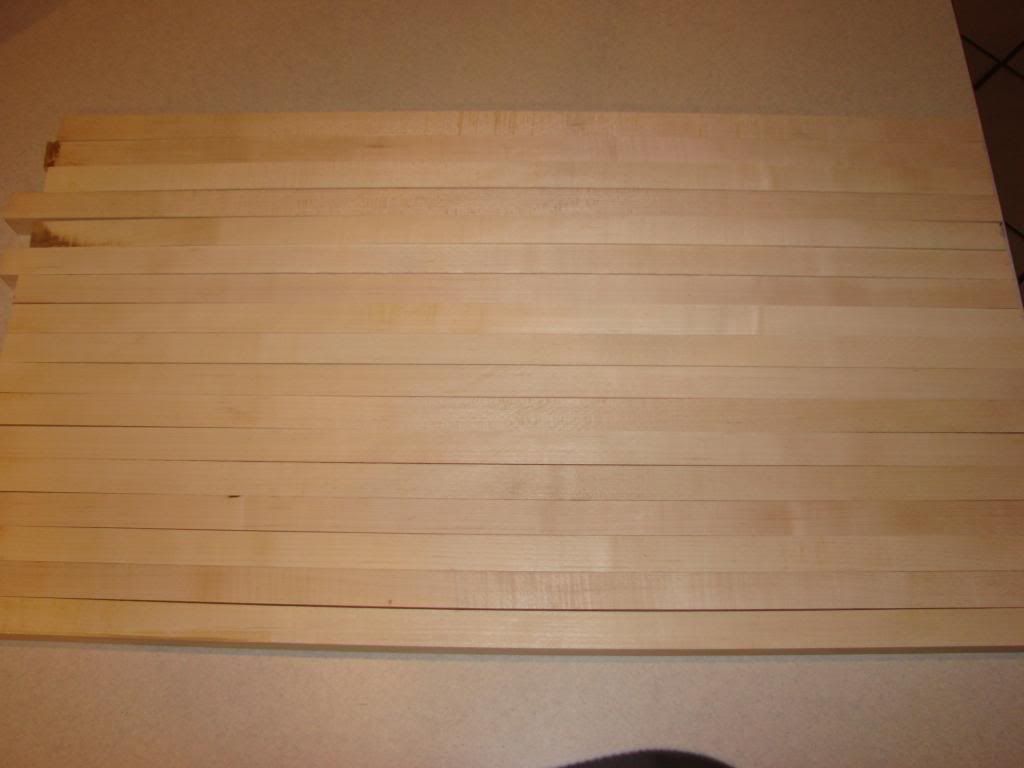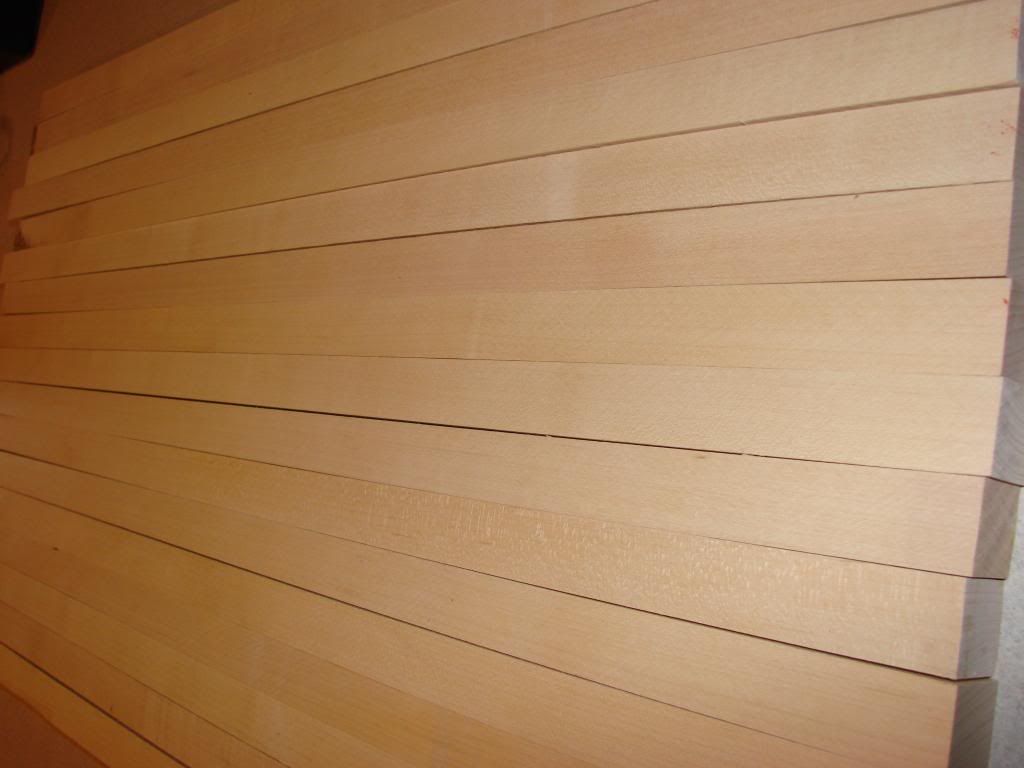I have finish cut shafts hanging that have been dead straight for years, then a cold front moves in and they warp, then straighten again when things equalize. It's wood. Turning them to final size is the only way to know exactly what you have, and even then things can and often do go wrong for no apparent reason. If you have somebody who can keep a 90% success rate on finish cut shafts, then he's doing far better than I could. And you must consider that I actually log, mill, & dry my own wood.
I begin with trees that are straight as shafts, gently drop them usually uphill, quarter them parallel to grain, mill each quarter parallel to grain, toss away the few inches next to the pith, put them in a DH kiln immediately upon milling, and never subject them to temps above 100*f while drying. Literally, the wood is in the kiln drying the same day the tree was cut. Maybe extreme but I have learned my lesson on bacterial staining. Once dry, I have 3.5' long x 2"-6" wide billets that are as close to perfect as can possibly be for cues. I then straight line along the grain and resaw into shaft squares. The grain runs absolute from one end to the next, no run off. Any wavering is a grain anomaly, but each grain line can be traced end to end. I spent years & tons of money to learn how to do this all correctly, and am pretty dang confident in the process. Still yet, wood being wood, I lose much more than 10%. I lose wood at every step from tree to finished shaft. The last cut yielded around 1100bf of shaft billets, and by the time I got them to squares I had around 700 shafts. I will end up with maybe 400 shafts by the time they reach final size. That's the cold hard reality of making shafts. You lose them to pin knots, mineral stain, grain wiggle, movement, etc. It's things you cannot see in tree or log or lumber form.
Sorry for the long post. I just wanted to give perspective. Even when a cue maker himself does it through every step of the process, there's no guarantee. Unfortunately, you won't find many cue makers with chainsaws & logging equipment, sawmill, kiln, etc. that is willing to sell shafts to you. So what you have is commercial loggers cutting trees, timber brokers & mills buying logs, and if you are lucky the logs get milled with cue shafts in mind. Even then the mill operator isn't a cuemaker. He's only following instructions. Otherwise you get shafts from wood that is cut & dried in general manner to suit the majority of the woodwork industry. Again, 10% is a strong claim to make & if it can be met then you have an outstanding dealer. If I could buy finish cut shaft with my taper for $25 each and a 90% guarantee, I would never cut another tree. It seriously is one of those endeavors where huge losses are par for the course & to be expected.


